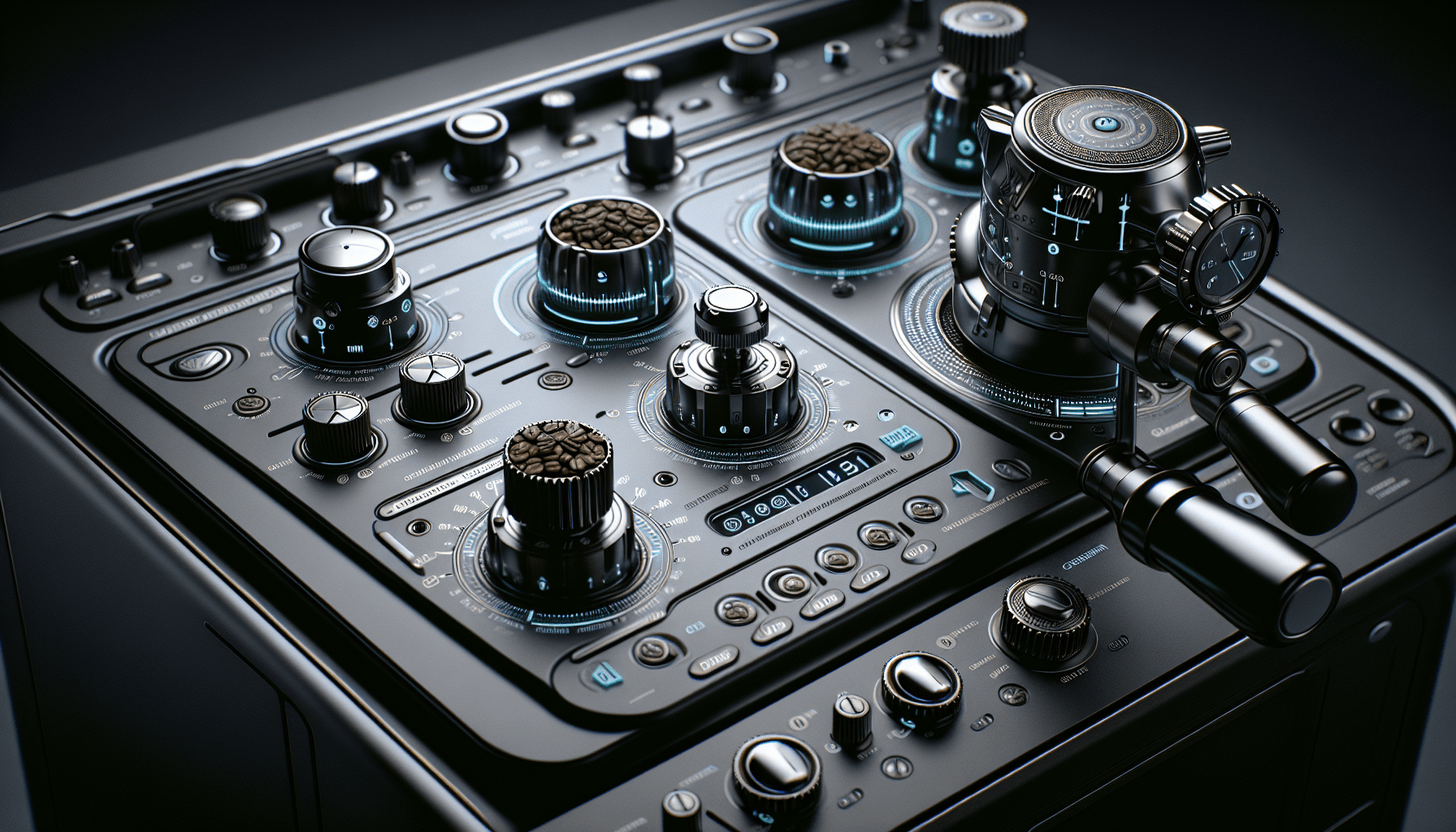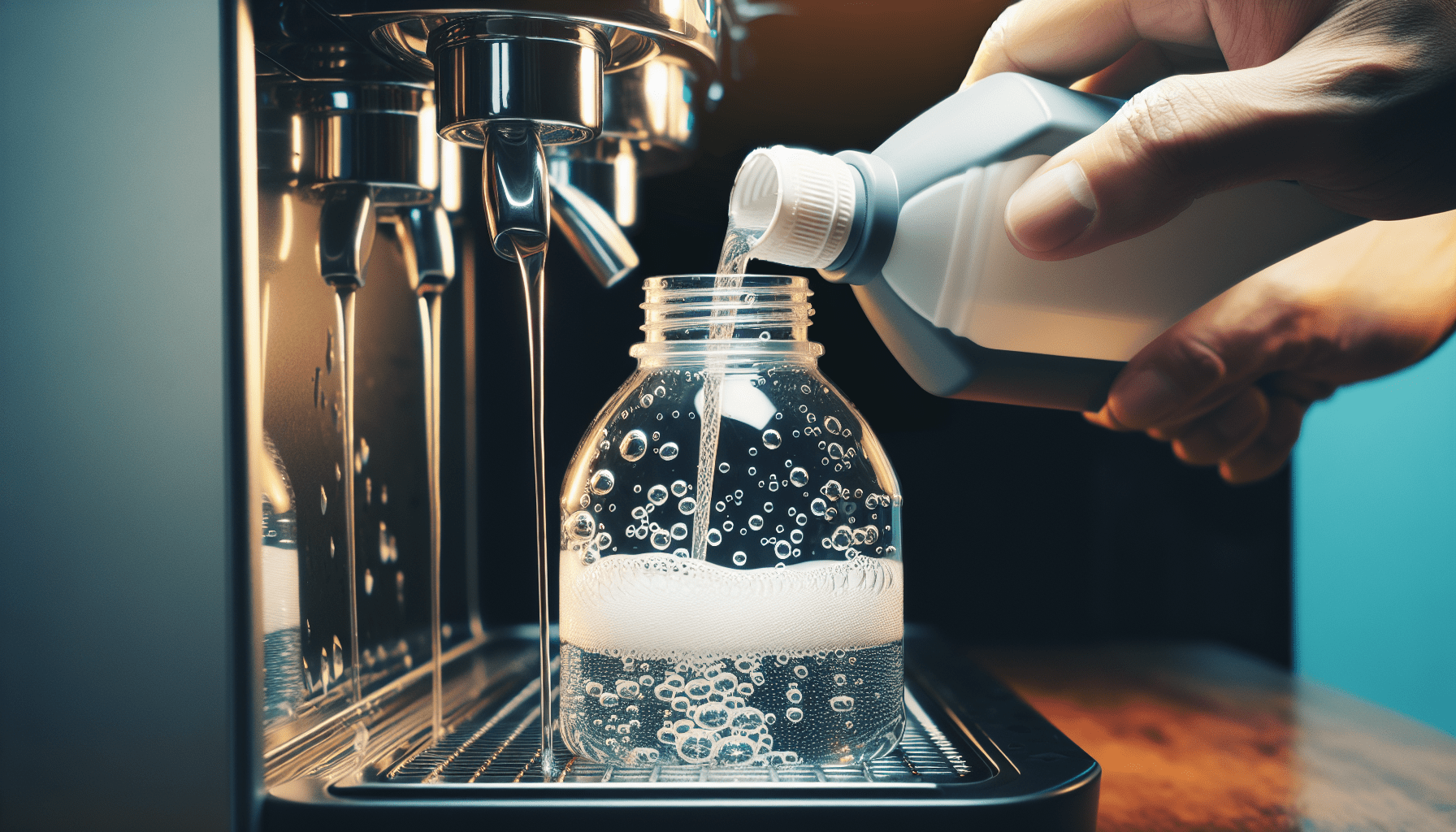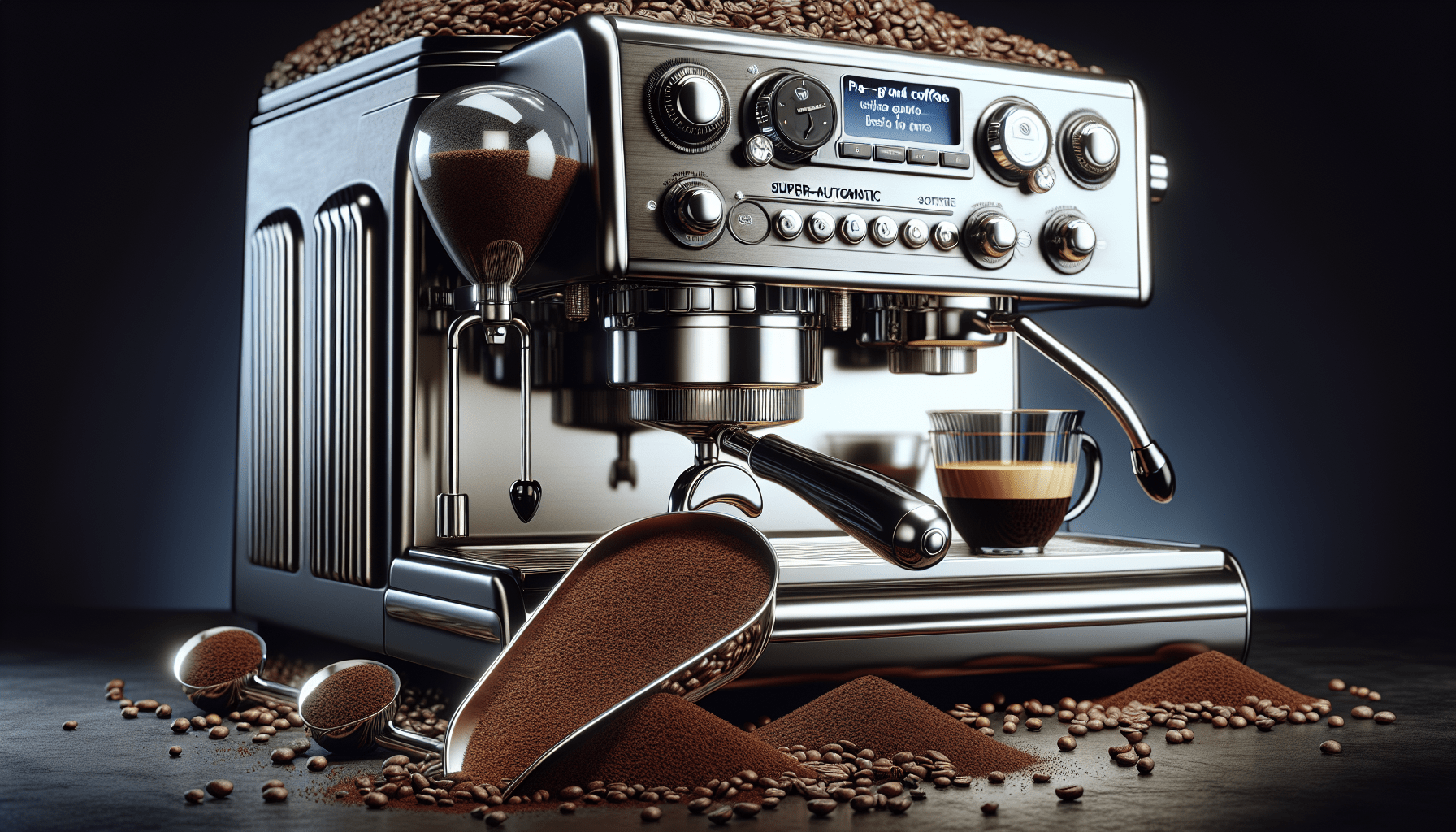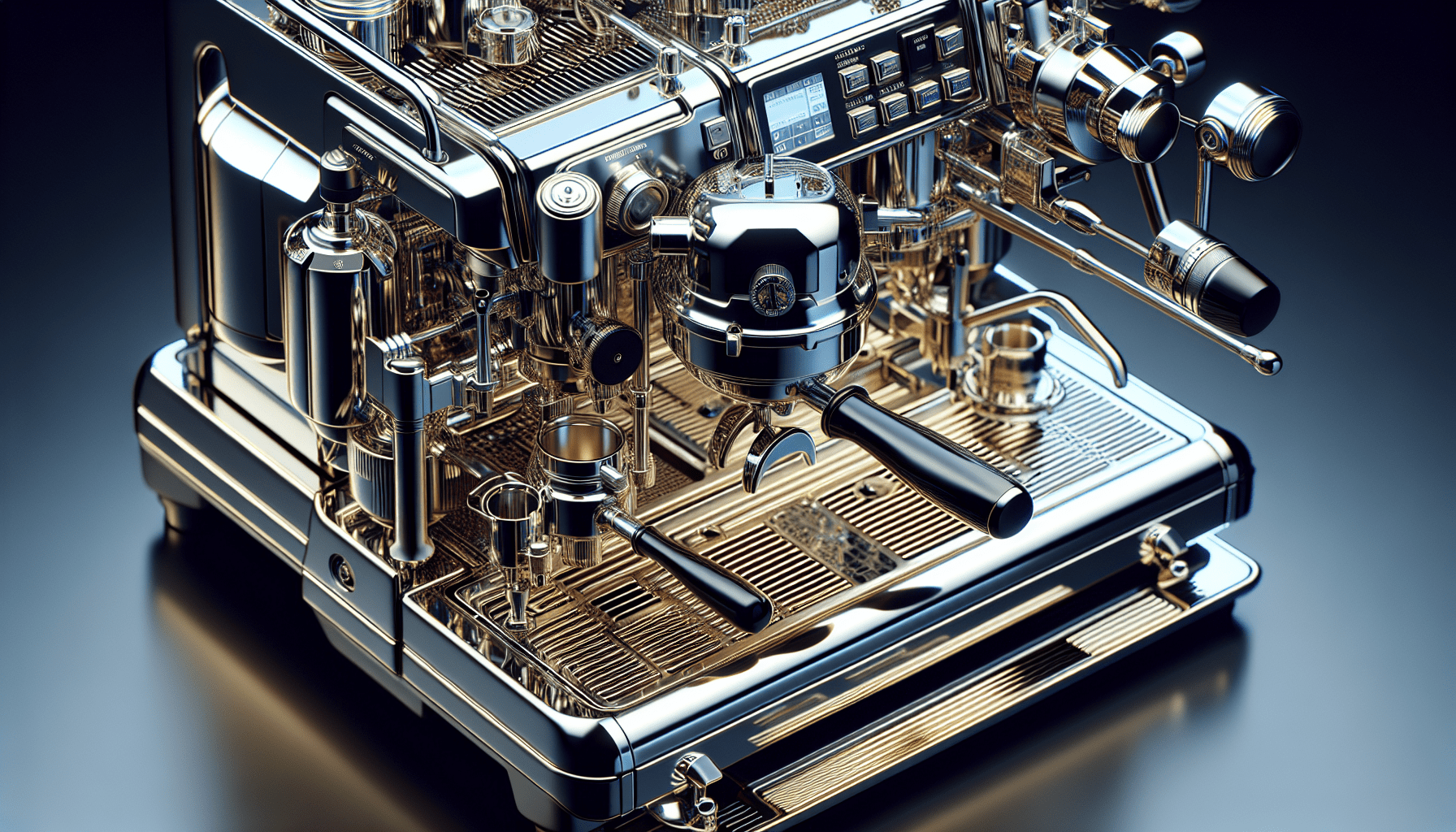So, you recently invested in a super-automatic espresso machine, and now you’re ready to take your coffee game to the next level. But here’s the thing: you’ve got an assortment of coffee bean types in your pantry, and you’re unsure how to make the most out of each one. Don’t worry, my friend, because I’ve got you covered. In this article, we’ll explore the ins and outs of adjusting the settings for different coffee bean types with your super-automatic espresso machine. Get ready to brew the perfect cup every time, tailored to your favorite beans!
Understanding the Basics
Different Types of Coffee Beans
When it comes to coffee, there are a wide variety of beans to choose from. Each type of coffee bean offers its own unique characteristics and flavors, providing you with endless options to explore. The common types of coffee beans include Arabica and Robusta. Arabica beans are known for their delicate flavor profiles, with hints of acidity and sweetness. On the other hand, Robusta beans are generally more robust and have a higher caffeine content. By understanding the differences between these coffee beans, you can make informed choices when selecting the perfect bean for your super-automatic espresso machine.
Super-automatic Espresso Machine Features
A super-automatic espresso machine takes the hard work out of making the perfect cup of coffee. These machines are equipped with various features that allow you to customize every aspect of the brewing process, from grind size to extraction time. With a super-automatic espresso machine, you can achieve professional-quality coffee without the need for extensive knowledge or experience. Some common features of super-automatic espresso machines include adjustable grind settings, adjustable coffee strength, customizable temperature settings, pre-infusion function, and aroma settings. These features give you complete control over your coffee brewing experience and allow you to tailor each cup to your personal preferences.
Selecting the Grind Size
Brewing Methods and Grind Size
The grind size of your coffee beans is crucial in determining the flavor and strength of your coffee. Different brewing methods require different grind sizes to achieve optimal results. For example, a coarse grind is often preferred for a French press, while a fine grind is necessary for an espresso shot. When selecting the grind size for your super-automatic espresso machine, consider the brewing method you will be using. Experiment with different grind sizes to find the perfect balance of flavor and strength for your preferred brewing method.
Grind Size Recommendations for Different Coffee Beans
The type of coffee beans you are using will also influence the ideal grind size for your super-automatic espresso machine. Arabica beans tend to require a finer grind to bring out their delicate flavors, while Robusta beans can benefit from a slightly coarser grind to balance their strong taste. It is recommended to start with a medium grind size and adjust according to your taste preferences. Keep in mind that the grind size can greatly impact the overall taste of your coffee, so it’s worth experimenting with different settings to find the perfect grind size for your chosen coffee beans.
Adjusting the Coffee Strength
Understanding Coffee Strength
Coffee strength refers to the intensity of the flavors in your brewed coffee. It is influenced by factors such as the ratio of coffee grounds to water and the extraction time. Adjusting the coffee strength allows you to fine-tune the taste of your coffee, ensuring that it matches your personal preferences. Some coffee lovers prefer a bold and strong cup of coffee, while others prefer a milder and smoother taste. By adjusting the coffee strength on your super-automatic espresso machine, you can create a cup of coffee that is perfectly suited to your individual taste.
Finding the Right Strength for Different Coffee Beans
Different types of coffee beans will require different adjustments to achieve the desired strength. Arabica beans, with their delicate flavors, may benefit from a slightly stronger brew to bring out their nuances. On the other hand, Robusta beans, known for their robust and bolder taste, may require a slightly milder brew to avoid overpowering the senses. It’s essential to experiment with different coffee strengths to find the perfect balance for each type of coffee bean you use. This way, you can fully appreciate the unique characteristics of each coffee bean and savor the flavors they offer.
Setting the Coffee Temperature
Importance of Coffee Temperature
Coffee temperature plays a significant role in the overall taste and quality of your coffee. The ideal brewing temperature allows for optimal extraction of flavors, resulting in a well-balanced and satisfying cup of coffee. If the water temperature is too hot, it can lead to over-extraction, resulting in a bitter taste. On the other hand, if the water temperature is too low, it may not extract enough flavors, resulting in a weak and underwhelming coffee. By setting the coffee temperature on your super-automatic espresso machine, you can ensure that you achieve the perfect balance between extracting the flavors and avoiding any undesirable taste notes.
Recommended Temperatures for Different Coffee Beans
The recommended coffee temperature can vary depending on the type of coffee beans you are using. Arabica beans generally benefit from a slightly lower brewing temperature to preserve their delicate flavors. A temperature range of 195°F to 205°F (90°C to 96°C) is often recommended for Arabica beans. On the other hand, Robusta beans can withstand higher temperatures, and a range of 205°F to 210°F (96°C to 99°C) is often suitable. It’s important to note that these temperature ranges are general recommendations, and you may need to adjust them based on your personal taste preferences and the specific characteristics of your chosen coffee beans.
Customizing the Extraction Time
How Extraction Time Affects Taste
The extraction time refers to the duration in which water comes into contact with the coffee grounds during the brewing process. The extraction time plays a significant role in determining the flavor profile of your coffee. A shorter extraction time may result in a milder and less intense cup of coffee, while a longer extraction time can lead to a stronger and more robust flavor. By customizing the extraction time on your super-automatic espresso machine, you can tailor the taste of your coffee to match your preferences.
Optimal Extraction Time for Different Coffee Beans
The optimal extraction time can vary depending on the coffee beans you are using. Generally, Arabica beans benefit from a slightly longer extraction time to bring out their nuanced flavors. A range of 20 to 30 seconds is often recommended for Arabica beans. On the other hand, Robusta beans can withstand a shorter extraction time due to their bold taste. A range of 15 to 25 seconds is often suitable for Robusta beans. It’s important to note that these recommended extraction times serve as a starting point, and you may need to adjust them based on your personal preference and the specific characteristics of your chosen coffee beans.
Experimenting with Water Volume
Understanding Water Volume
The water volume used during the brewing process can significantly impact the taste and strength of your coffee. The amount of water you use determines the coffee-to-water ratio, which affects the overall extraction and flavor profile. Adjusting the water volume on your super-automatic espresso machine allows you to customize the strength and taste of your coffee to suit your preferences.
Recommended Water Volume for Different Coffee Beans
The recommended water volume can vary depending on the type of coffee beans you are using. Arabica beans, with their delicate flavors, may benefit from a slightly lower water volume to ensure a more concentrated taste. On the other hand, Robusta beans, with their bold and strong flavors, can withstand a slightly higher water volume to balance their intensity. It’s important to experiment with different water volumes to find the ideal balance for the specific coffee beans you are using. By adjusting the water volume, you can create a cup of coffee that perfectly highlights the unique characteristics of each coffee bean.
Mastering Milk Frothing
The Role of Milk in Espresso Drinks
Milk plays a crucial role in many espresso drinks, adding richness, texture, and complexity to the overall flavor profile. Whether you’re making a latte, cappuccino, or macchiato, mastering the art of milk frothing is essential to creating a cafe-quality experience at home. With a super-automatic espresso machine, you can easily froth milk to your desired consistency, allowing you to achieve perfectly frothed milk for a variety of espresso drinks.
Milk Frothing Techniques for Different Coffee Beans
When it comes to milk frothing, the type of coffee beans you’re using doesn’t directly impact the technique. However, the flavor profile of your chosen coffee beans can influence the milk-to-coffee ratio you prefer. For example, if you’re using a robust and strong coffee bean like Robusta, you may opt for a larger amount of frothed milk to balance the bold flavors. Alternatively, if you’re working with a delicate and subtle coffee bean like Arabica, you may choose to use less frothed milk to avoid overwhelming the taste. Ultimately, the milk frothing technique you employ is adaptable to your personal preference and the desired flavor profile of your espresso drinks.
Using Pre-infusion Function
What is Pre-infusion
The pre-infusion function is a feature available in some super-automatic espresso machines. It involves a short pre-soaking stage where the coffee grounds are moistened before the full extraction process begins. This pre-soaking allows the coffee to bloom and release its flavors more gradually, resulting in a smoother and more balanced cup of coffee. The pre-infusion function can be a valuable tool in enhancing the taste and aroma of your coffee, particularly when using certain types of coffee beans.
Benefits of Pre-infusion for Different Coffee Beans
The benefits of pre-infusion can vary depending on the coffee beans you are using. Arabica beans, with their delicate flavors, can benefit from pre-infusion as it allows the flavors to develop more evenly and gently. This results in a smoother and less acidic cup of coffee. On the other hand, Robusta beans, known for their robust and bold flavors, may not require pre-infusion as their strong taste can withstand a more direct extraction process. By utilizing the pre-infusion function on your super-automatic espresso machine, you can experiment with enhancing the flavors of different coffee beans to unlock their full potential.
Understanding Aroma Settings
The Importance of Aroma in Coffee
Aroma plays a significant role in our perception and enjoyment of coffee. The aroma of coffee can greatly influence the overall taste experience, as it engages our sense of smell and intensifies the flavors. By understanding and utilizing the aroma settings on your super-automatic espresso machine, you can enhance the sensory experience of your coffee.
Adjusting Aroma Settings for Different Coffee Beans
Different coffee beans have their own unique aroma profiles, and adjusting the aroma settings on your super-automatic espresso machine allows you to highlight these characteristics. Arabica beans, with their delicate aromas, may benefit from a slightly higher aroma setting to intensify their fragrance. This can create a more immersive sensory experience when enjoying a cup of coffee. On the other hand, Robusta beans, with their bold aromas, may require a slightly lower aroma setting to avoid overpowering the senses. By experimenting with the aroma settings, you can customize the olfactory experience of your coffee and fully appreciate the distinct aromas of each coffee bean.
Tips and Tricks
Keeping Track of Adjustments
As you experiment with different settings and techniques on your super-automatic espresso machine, it’s essential to keep track of your adjustments. By documenting the grind sizes, coffee strengths, temperature settings, and other variables, you can replicate your favorite cups of coffee and fine-tune your brews. This record-keeping practice allows you to refine your preferences and improve your coffee-making skills over time.
Experimenting and Documenting Results
To truly master the art of adjusting settings for different coffee bean types, don’t be afraid to experiment and try new combinations. Taste is subjective, and what works for one person may not work for another. By documenting the results of your experiments, including tasting notes and personal preferences, you can gradually develop a repertoire of tried-and-true settings for each type of coffee bean. With time and practice, you’ll become an expert at adjusting the settings on your super-automatic espresso machine and brewing the perfect cup of coffee to suit your tastes.
In conclusion, adjusting the settings for different coffee bean types with a super-automatic espresso machine allows you to unlock the full potential of each coffee bean and create a personalized coffee experience. By understanding the basics, selecting the grind size, adjusting the coffee strength, setting the coffee temperature, customizing the extraction time, experimenting with water volume, mastering milk frothing, utilizing the pre-infusion function, and understanding aroma settings, you can elevate your coffee brewing skills to new heights. Remember to keep track of your adjustments, experiment with different combinations, and document your results to continuously improve and refine your coffee-making abilities. With a super-automatic espresso machine and a willingness to explore and experiment, you’ll be able to enjoy a variety of perfectly brewed coffees right in the comfort of your own home.




